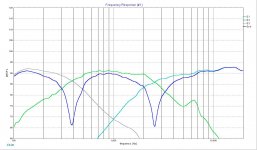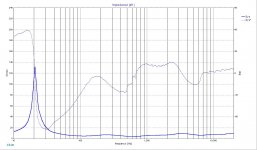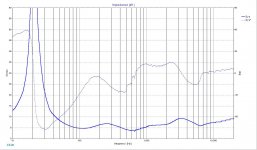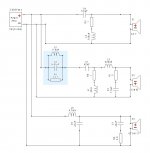Exactly! I am not worried about port resonances as i´ts going to be cutted around 300hz. Problem solved...
TL require much more time and testing than BR I believe. I rather stick to models that I already work with.
Casull!
I was actually talking about the Satori Line, wich shows a very different off axis response. Although!, I just found this and honestly, didn´t like much.
Satori MR13P-8 | HiFiCompass
Satori TW29R | HiFiCompass
You are right! totally different from the factory measurements. And they start rolling of at 2k. My plan didn´t work haha!
I do trust my simulations! forgot to clear out, that the 60 and 100 litres boxes I heard, where not my own.
Mines will be tuned at 31Hz with F3 30hz, 80L. Rectangular front port.
I´ll do some more research about those SB drivers you mentioned, they look really good.
What sonic difference could they have with the Satori Line, SB or Scanspeak?
TL require much more time and testing than BR I believe. I rather stick to models that I already work with.
Casull!
I was actually talking about the Satori Line, wich shows a very different off axis response. Although!, I just found this and honestly, didn´t like much.
Satori MR13P-8 | HiFiCompass
Satori TW29R | HiFiCompass
You are right! totally different from the factory measurements. And they start rolling of at 2k. My plan didn´t work haha!
I do trust my simulations! forgot to clear out, that the 60 and 100 litres boxes I heard, where not my own.
Mines will be tuned at 31Hz with F3 30hz, 80L. Rectangular front port.
I´ll do some more research about those SB drivers you mentioned, they look really good.
What sonic difference could they have with the Satori Line, SB or Scanspeak?
I was working on a nearfield system for myself but was limited to a much smaller box size for the woofer (~1 cubic foot). I didn't have a choice to use a vented box due to port resonance so I suppose I was fearmongering a tad.With BR systems determining the port resonance is fairly simple. In metric terms the most severe and lowest resonance occurs at 343/(2 x L) Hz, with L = port length in meter. As most BR ports will be no more than about a quarter meter long, such resonances appear around 650-700Hz and up. For three way systems the issue can be solved by a low enough lowpass on the woofer.
In TL systems resonances occur at much lower frequencies. Along with clever design of the line itself acoustic damping is the only cure. And that leads again to loss of efficiency. And all of this is to be accomplished with more than a little trial and error.
The acoustic damping is a small price to pay for the overall benefit. It's like using a supercharger on a Top Fuel dragster; sure, it consumes upwards of 600 HP but it gives you thousands more. That said, if a vented box can be successfully used, there usually isn't any pressing need to go TL as you say.
Yes, me too. I was looking at SB's charts for the MR13P and the TW29R, which my comments about the red lines applied to.I was actually talking about the Satori Line, wich shows a very different off axis response.
Tough question to answer. I'm a big believer in the "voiceless" driver, which performs cleanly enough in the operating region where you can't really tell what it does at all other than reproduce the signal coming in.I´ll do some more research about those SB drivers you mentioned, they look really good.
What sonic difference could they have with the Satori Line, SB or Scanspeak?
Tough question to answer. I'm a big believer in the "voiceless" driver, which performs cleanly enough in the operating region where you can't really tell what it does at all other than reproduce the signal coming in.
Me too! I am actually trying to find a mid as flat and transparent as possible, that can be crossed at around 3Khz. To keep the vocal range as far as possible from the XO region (talking about Fundamentals). If not, I would have to go to a mid dome that can cross around 4/5k... but thats a totally different project and price range.
Did anyone here tried Eton Midwoofers? I´ll post some "simulations I did yesterday"
Ok, I did some simulations this weekend to see how drivers could interact from each other... I am not a specialist building crossovers, so any observation it´s more than welcome!
Of course they are various factors not taking into account, like the enclosure, power amp, etc. I´am still trying to find the combination for mixing/mastering.
The only sim where I changed the woofer sensitivity is on the first one. Just 2db, to "simulate" baffle step loss. I am aware it can happend the same thing on the other designs with Satori and SS. But I am not worried as the those mids are much higher in sensitivity than the Eton mid.
Systems
Eton 11/612 + Eton 5/512 + Scanspeak D2608/9130 HDS
Xo F: 300Hz & 2Khz
Eton 11/612 + Satori MR13P-4 + Satori TW29R
Xo F: 350Hz & 3Khz
I´ll try today with other SB series.
Eton 11/612 + Scanspeak 15w/4434G00+ Scanspeak D2608/9130 HDS
Xo F: 380Hz & 2500Khz
Of course they are various factors not taking into account, like the enclosure, power amp, etc. I´am still trying to find the combination for mixing/mastering.
The only sim where I changed the woofer sensitivity is on the first one. Just 2db, to "simulate" baffle step loss. I am aware it can happend the same thing on the other designs with Satori and SS. But I am not worried as the those mids are much higher in sensitivity than the Eton mid.
Systems
Eton 11/612 + Eton 5/512 + Scanspeak D2608/9130 HDS
Xo F: 300Hz & 2Khz
Eton 11/612 + Satori MR13P-4 + Satori TW29R
Xo F: 350Hz & 3Khz
I´ll try today with other SB series.
Eton 11/612 + Scanspeak 15w/4434G00+ Scanspeak D2608/9130 HDS
Xo F: 380Hz & 2500Khz
Attachments
-
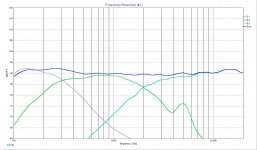 ETON + ETON + SS XO RTA V2.jpg105.1 KB · Views: 237
ETON + ETON + SS XO RTA V2.jpg105.1 KB · Views: 237 -
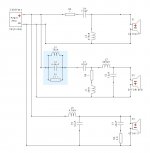 ETON+SATORI+SATORI XO.jpg53.4 KB · Views: 57
ETON+SATORI+SATORI XO.jpg53.4 KB · Views: 57 -
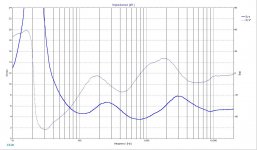 ETON+SATORI+SATORI XO Z 2.jpg114.6 KB · Views: 48
ETON+SATORI+SATORI XO Z 2.jpg114.6 KB · Views: 48 -
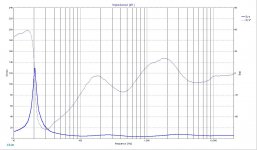 ETON+SATORI+SATORI XO Z.jpg111.4 KB · Views: 49
ETON+SATORI+SATORI XO Z.jpg111.4 KB · Views: 49 -
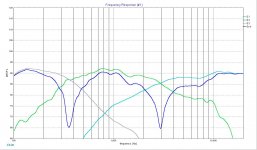 ETON+SATORI+SATORI XO RTA 2.jpg111.9 KB · Views: 57
ETON+SATORI+SATORI XO RTA 2.jpg111.9 KB · Views: 57 -
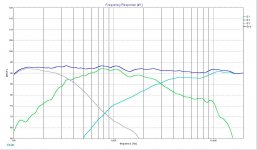 ETON+SATORI+SATORI XO RTA.jpg107.3 KB · Views: 75
ETON+SATORI+SATORI XO RTA.jpg107.3 KB · Views: 75 -
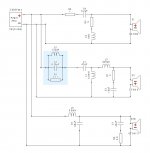 ETON + ETON + SS XO V2.jpg53.7 KB · Views: 230
ETON + ETON + SS XO V2.jpg53.7 KB · Views: 230 -
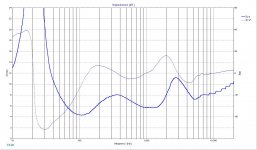 ETON + ETON + SS XO Z2 V2.jpg115.2 KB · Views: 225
ETON + ETON + SS XO Z2 V2.jpg115.2 KB · Views: 225 -
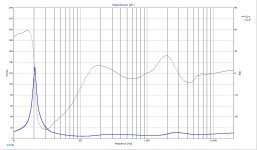 ETON + ETON + SS XO Z V2.jpg111.8 KB · Views: 214
ETON + ETON + SS XO Z V2.jpg111.8 KB · Views: 214 -
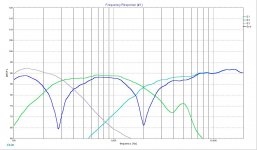 ETON + ETON + SS XO RTA2 V2.jpg110.4 KB · Views: 226
ETON + ETON + SS XO RTA2 V2.jpg110.4 KB · Views: 226
Last edited:
This is very overrated, and besides, the harmonics are especially important anyhow (not to mention that 3 kHz is pretty much the most sensitive region of the audible spectrum). They're what tell you you're listening to a piano instead of a sine wave generator.that can be crossed at around 3Khz. To keep the vocal range as far as possible from the XO region (talking about Fundamentals).
I haven't looked. 🙂 I'm not that interested in them, to be honest. I don't know what they will tell you at this point in terms of driver selection, especially since you say you want to use drivers that have wide, flat response curves.good observation. No worries then for crossing it that far...
How do simulations look for you?
Stop simulating. Go build the speakers. Mount the bare drivers. Measure. Import measurements in sim app. Then we talk again. 😉
For me the point of simulations is to determine how well certain drivers work together as well as with the baffle. As such, they need to be as detailed as possible, so they need to include baffle diffraction info, LF alignment info as well as acoustic center guestimates. Setting correct acoustical slope and xo point targets helps as well.
So for the above, none of the sims work yet for me because they are not detailed enough. They don't contain the correct baffle or acoustic center info. Many times I've tried certain driver pairings and getting the summed response, the phase alignment and some of the resonances sufficiently attenuated was just a herculean task. Best to move on to a different pairing when that's what the sims are showing you. For eg, it looks now like the OP is no longer considering the Focal tweeter with these 5" mids. That is a step forward. It would appear then that the sims have finally resulted in that idea being discarded which would be 1 of the points of doing the sims.
Not that I know much about studio monitors especially listening in the nearfield, but I am curious about the off-axis recommendations being put forward. With your speakers toed in, I'm trying to figure out how it is at all possible for a response that is 30 or 45 or 60 degrees off-axis to reflect off the side wall in your studio and reach your ears. For the life of me, I can't figure out how the geometry of that is going to work. All those 1st reflection paths look like they will pass well behind the listening position. Irregardless, frequencies above 3kHz are rather easy to absorb anyways, so it would seem to me like the tweeter off-axis response in this particular situation is somewhat moot. Please, someone educate me on this if I am wrong.
Wish I could help re that Eton mid but Eton isn't widely used here in North America. It does have similar slats in the cone to the SS Revelators and Troels seemed to quite like that 4" version he used, albeit from a different line, so there is that. Just on the off chance you didn't know, SB Acoustic is run by the same person who used to work for ScanSpeak and designed many of their drivers, including the Revelator series so I think you can expect very similar performance from those 2 drivers.
And I did manage to find some distortion measurements for the SS D2608. Better than I thought. Crossing at about 2kHz seems now like a viable choice to me.
So for the above, none of the sims work yet for me because they are not detailed enough. They don't contain the correct baffle or acoustic center info. Many times I've tried certain driver pairings and getting the summed response, the phase alignment and some of the resonances sufficiently attenuated was just a herculean task. Best to move on to a different pairing when that's what the sims are showing you. For eg, it looks now like the OP is no longer considering the Focal tweeter with these 5" mids. That is a step forward. It would appear then that the sims have finally resulted in that idea being discarded which would be 1 of the points of doing the sims.
Not that I know much about studio monitors especially listening in the nearfield, but I am curious about the off-axis recommendations being put forward. With your speakers toed in, I'm trying to figure out how it is at all possible for a response that is 30 or 45 or 60 degrees off-axis to reflect off the side wall in your studio and reach your ears. For the life of me, I can't figure out how the geometry of that is going to work. All those 1st reflection paths look like they will pass well behind the listening position. Irregardless, frequencies above 3kHz are rather easy to absorb anyways, so it would seem to me like the tweeter off-axis response in this particular situation is somewhat moot. Please, someone educate me on this if I am wrong.
Wish I could help re that Eton mid but Eton isn't widely used here in North America. It does have similar slats in the cone to the SS Revelators and Troels seemed to quite like that 4" version he used, albeit from a different line, so there is that. Just on the off chance you didn't know, SB Acoustic is run by the same person who used to work for ScanSpeak and designed many of their drivers, including the Revelator series so I think you can expect very similar performance from those 2 drivers.
And I did manage to find some distortion measurements for the SS D2608. Better than I thought. Crossing at about 2kHz seems now like a viable choice to me.
Because of the short listening distance, a little movement of the head results in a larger off-axis angle displacement relative to a longer listening distance. You don’t want to lose everything above 15 kHz if you happen to shift around in your seat a bit.Not that I know much about studio monitors especially listening in the nearfield, but I am curious about the off-axis recommendations being put forward. With your speakers toed in, I'm trying to figure out how it is at all possible for a response that is 30 or 45 or 60 degrees off-axis to reflect off the side wall in your studio and reach your ears. For the life of me, I can't figure out how the geometry of that is going to work. All those 1st reflection paths look like they will pass well behind the listening position. Irregardless, frequencies above 3kHz are rather easy to absorb anyways, so it would seem to me like the tweeter off-axis response in this particular situation is somewhat moot. Please, someone educate me on this if I am wrong.
Last edited:
Right. That's a good point.
But just as an example if the speakers are 6' apart and the listening distance is 1.2m, if you move you head 6" to the side, that's only 5 degrees off-axis. Move it 12" to the side and that's still only about 10 degrees off-axis. I still don't think those are significant enough changes to make the tweeter choice dependent on its off-axis response in this situation. Just saying....
But just as an example if the speakers are 6' apart and the listening distance is 1.2m, if you move you head 6" to the side, that's only 5 degrees off-axis. Move it 12" to the side and that's still only about 10 degrees off-axis. I still don't think those are significant enough changes to make the tweeter choice dependent on its off-axis response in this situation. Just saying....
Well, we don't know about the habits of this guy... for me, I lean forward and back, side to side, quite frequently and in a large amount besides. 6" for me is nothing 🙂 But when we're talking about something like the TW29R, it's pretty much nonexistent off-axis at its top end. He also mentioned having visitors, not quite sure the plan is to have them only listen in the one chair?Right. That's a good point.
But just as an example if the speakers are 6' apart and the listening distance is 1.2m, if you move you head 6" to the side, that's only 5 degrees off-axis. Move it 12" to the side and that's still only about 10 degrees off-axis. I still don't think those are significant enough changes to make the tweeter choice dependent on its off-axis response in this situation. Just saying....
You would think, at least until you look at the response peak.Wish I could help re that Eton mid but Eton isn't widely used here in North America. It does have similar slats in the cone to the SS Revelators and Troels seemed to quite like that 4" version he used, albeit from a different line, so there is that.
Zaph still has measurements of it on his website.And I did manage to find some distortion measurements for the SS D2608. Better than I thought. Crossing at about 2kHz seems now like a viable choice to me.
What you hear and perceive is not just the direct sound from the drivers. Much of what you hear is the reverberant sound from the room. The off axis sound is therefore crucial in assessing how a speaker will sound. Do not just look at the onaxis SPL curve.Right. That's a good point.
But just as an example if the speakers are 6' apart and the listening distance is 1.2m, if you move you head 6" to the side, that's only 5 degrees off-axis. Move it 12" to the side and that's still only about 10 degrees off-axis. I still don't think those are significant enough changes to make the tweeter choice dependent on its off-axis response in this situation. Just saying....
Well, we don't know about the habits of this guy... for me, I lean forward and back, side to side, quite frequently and in a large amount besides. 6" for me is nothing 🙂 .... He also mentioned having visitors, not quite sure the plan is to have them only listen in the one chair?
Yes, I was thinking of those too. Comparing to myself at my computer (yes I know, not quite the same), my chair pretty much never moves side to side but I do lean back to listen to my little computer speakers every now and then. Still, back and forth about a foot in OP's listening position is still only about a 5 degree difference. Other listeners at the back of the room though? That might be a different story.
Zaph still has measurements of it on his website.
I can find the Scan D2604 but not the D2608. If you are referring to the Peerless HDs as the same thing, I'm reluctant to accept that they are interchangeable without evidence. And the other measurements I did find for the D2608 are in fact different than Zaph's measurements for the HDS.
What you hear and perceive is not just the direct sound from the drivers. Much of what you hear is the reverberant sound from the room. The off axis sound is therefore crucial in assessing how a speaker will sound. Do not just look at the onaxis SPL curve.
I think I may have failed to express my point adequately enough. I was trying to say that in the OP's nearfield 1.2m listening position, the off-axis wall reflections are happening behind him so he is going to be primarily hearing the on-axis response as opposed to the power response. So in other words something more similar to the anechoic response instead of the power response. Maybe that might depend on how dead his walls and the back of his room are or perhaps I'm misunderstanding something.
But as I thought a little more about this, and considering exactly what you are saying - that in a normal room and in a normal farfield listening position we are indeed hearing a downward tilted power response instead of the flatter anechoic response - I am wondering whether or not the OP, listening in the nearfield on-axis to a speaker with a flat on-axis response, isn't ending up with a mix that is too bright? Or would that be the opposite - too dull? Or in other words, whether or not it would be more accurate to use a tweeter that does have a falling off-axis response and then to toe the speakers out from directly on-axis and therefore do listen to the the tweeter's off-axis response in the nearfield which would therefore be more similar to the falling power response of the farfield. Either that or don't actually tune the speakers flat in the HF's. Tune them falling in the 1st place and then do listen on-axis in the nearfield. But if you also perhaps wanted to occasionally have clients listen in the farfield in the back of the room (don't know that, just guessing), then the former choice would seem to be the one that would work better.
Don't know If I've explained that well enough. Words are hard sometimes. 😀
According to the Madisound product page it says it used to be the Peerless HDS. See the very bottom.I can find the Scan D2604 but not the D2608. If you are referring to the Peerless HDs as the same thing, I'm reluctant to accept that they are interchangeable without evidence. And the other measurements I did find for the D2608 are in fact different than Zaph's measurements for the HDS.
Scan-speak D2608/9130
Also these:
Scanspeak D2608/913000 Tweeter - Discovery Range - Peerless HDS 810921
PEERLESS-NOMEX-164
In my case it is a little extreme. I find myself moving back and forth enough that the speaker makes a ~30-40 degree cone to spray my movement range. If I set the speakers on-axis in the middle of that range I would be listening at up to 20 degrees off-axis, maybe a bit more to be conservative.Yes, I was thinking of those too. Comparing to myself at my computer (yes I know, not quite the same), my chair pretty much never moves side to side but I do lean back to listen to my little computer speakers every now and then. Still, back and forth about a foot in OP's listening position is still only about a 5 degree difference. Other listeners at the back of the room though? That might be a different story.
Your line of thought is clear (at least to me) and certainly behooves further thought and discussion. It should be a good thing for OP to try to play with a little EQ, which is easy enough if the workstation is PC-based.I think I may have failed to express my point adequately enough. I was trying to say that in the OP's nearfield 1.2m listening position, the off-axis wall reflections are happening behind him so he is going to be primarily hearing the on-axis response as opposed to the power response. So in other words something more similar to the anechoic response instead of the power response. Maybe that might depend on how dead his walls and the back of his room are or perhaps I'm misunderstanding something.
But as I thought a little more about this, and considering exactly what you are saying - that in a normal room and in a normal farfield listening position we are indeed hearing a downward tilted power response instead of the flatter anechoic response - I am wondering whether or not the OP, listening in the nearfield on-axis to a speaker with a flat on-axis response, isn't ending up with a mix that is too bright? Or would that be the opposite - too dull? Or in other words, whether or not it would be more accurate to use a tweeter that does have a falling off-axis response and then to toe the speakers out from directly on-axis and therefore do listen to the the tweeter's off-axis response in the nearfield which would therefore be more similar to the falling power response of the farfield. Either that or don't actually tune the speakers flat in the HF's. Tune them falling in the 1st place and then do listen on-axis in the nearfield. But if you also perhaps wanted to occasionally have clients listen in the farfield in the back of the room (don't know that, just guessing), then the former choice would seem to be the one that would work better.
Don't know If I've explained that well enough. Words are hard sometimes. 😀
According to the Madisound product page it says it used to be the Peerless HDS. See the very bottom.
PEERLESS-NOMEX-164
Yes that's what I knew as well. I was just seeing differences between these measurements:
www.audioexcite.com >> ScanSpeak D2608/913000
ScanSpeak D2608/913000 | HiFiCompass - всё для акустических систем и не только
and Zaph's:
Zaph|Audio
Still, Troels chose a fairly high xo point for it, especially combined with a mid/woofer that size. Good reference though for the a potential xo if the OP chooses that tweeter.
- Home
- Loudspeakers
- Multi-Way
- 3way Studio Design

